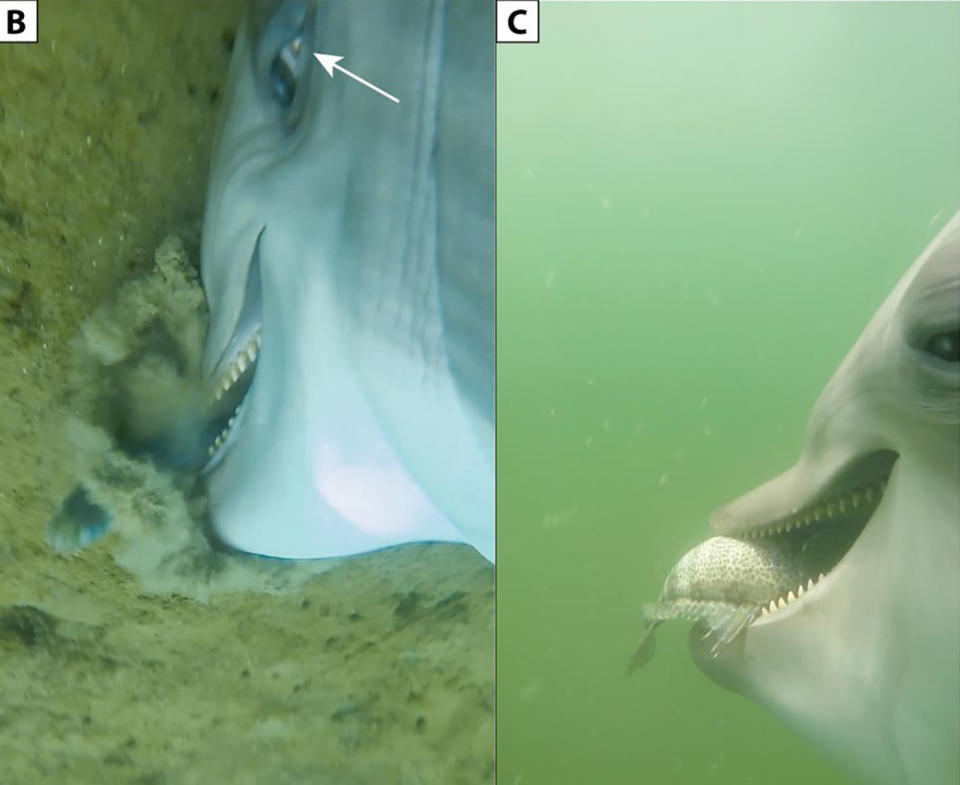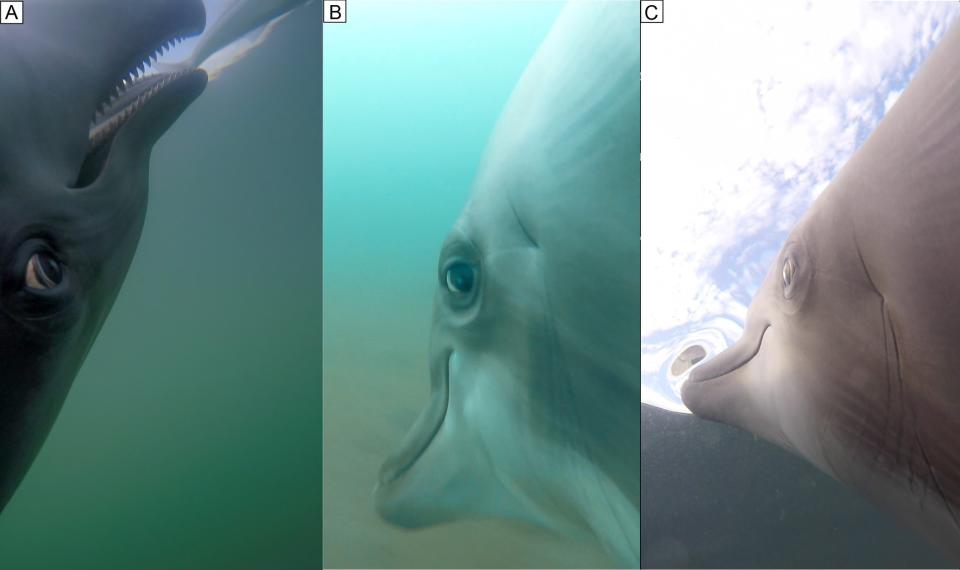How do dolphins hunt? A research project provides a dolphin's-eye view
Scientists trying to understand the hunting behaviors of bottlenose dolphins have come up with a unique solution: fit them with video cameras.
The result is the most remarkable insight into the hunting process of dolphins seen so far, showing crucial details of their search for prey — and recording their squeals of victory when they catch some.
One dolphin is even seen hunting and eating several venomous sea snakes, a surprising and dangerous choice for a meal that scientists can’t fully explain.
The videos, released Wednesday, are an “incredible addition” to the scientific knowledge of dolphins hunting in the open ocean, biologist Brittany Jones of the National Marine Mammal Foundation, a nonprofit group based in San Diego, said in an email. The scientists observed “eye movements, capture strategies, and movements of the lips, tongue, muscles, and gular [lower jaw] region during prey capture events which would be very difficult to achieve with wild dolphins.”
Jones worked closely with the authors of a research paper based on the video published in the journal PLOS One. The lead author is Dr. Sam Ridgway, a former foundation president and a renowned marine mammal veterinarian and scientist who died in July.
Under Ridgway, the foundation partnered with the U.S. Navy on its Marine Mammal Program, which trains bottlenose dolphins and California sea lions as underwater “watch dogs” to detect explosives and other objects in harbors and at sea. About 70 dolphins and 30 sea lions are in the program, which is also based in San Diego, and the partnership has yielded more than 1,200 scientific studies of their physiology and behavior.

For the latest study the researchers fitted six U.S. Navy dolphins — identified in the study only as B, K, S, Y, T and Z — with a harness and underwater video camera that could record their eyes and mouths. The cameras also made audio recordings of any noises.
Study co-author Dianna Samuelson Dibble, a foundation biologist, said the video and audio give scientists unique insight into the hunting behavior of bottlenose dolphins. Although the dolphins in the study aren’t wild, they have frequent opportunities to hunt in the open ocean and the scientists expect wild dolphins hunt in much the same way.
Of special note are the sounds they make while hunting. The dolphins made “clicks” every 20 to 50 milliseconds as they looked for prey, a rapid noise that only they can hear clearly and which seems to be a form of echolocation — the natural sonar sense used by dolphins, porpoises and toothed whales to detect fish by bouncing sounds off them.
“It became apparent during video analyses when the dolphins had identified the next prey target,” Dibble said in an email. “The background noise would quickly intensify, masking many dolphins’ sounds as the animal picked up speed in pursuit.”
The dolphins then began making a buzzing sound as they closed in, followed by a squeal of victory when they caught their prey. “The buzzing and squealing was almost constant until after the fish was swallowed,” she said.

The videos show that dolphins also use their eyes to track prey at close range.
“As the dolphins approached prey, it was evident that the visible eye was oriented toward the fish,” Dibble said. “At times we see a ring of skin deformation surrounding the eyeball that is probably indicative of eye muscle contractions.”
Fish near the surface would sometimes jump into the air in a desperate attempt to escape, but the dolphins were able to stay on target. “The dolphin would swim ventrally [almost upright] while tracking the prey visually and capture the fish as it landed back in the water,” she said.
One intrepid animal, dolphin Z, was seen on video hunting and devouring eight yellow-bellied sea snakes in one day, apparently without suffering any ill effects, although they’re known to be extremely venomous and have made other marine mammals vomit. The researchers think the snakes were juveniles that had not developed strong venom, and that wild dolphins may be taught by other members of their group to avoid them.
Richard Connor, a professor emeritus of biology at the University of Massachusetts at Dartmouth and a director of the Dolphin Decade research project, said that his research team often used handheld cameras from boats and video from aerial drones to record dolphin behavior, but not video cameras carried by the dolphins themselves.
“Our cameras never granted us the remarkable perspective shown in this paper,” he said in an email, adding that it would spur his team and others to further investigate how wild dolphins feed with simultaneous video and acoustic recordings.
This article was originally published on NBCNews.com

